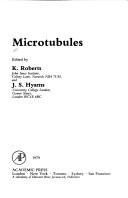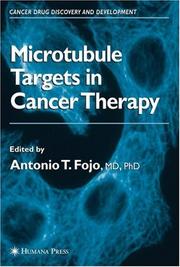| Listing 1 - 10 of 27 | << page >> |
Sort by
|
Book
Year: 1982 Publisher: New York (N.Y.): Academic press
Abstract | Keywords | Export | Availability | Bookmark
 Loading...
Loading...Choose an application
- Reference Manager
- EndNote
- RefWorks (Direct export to RefWorks)
Book
Abstract | Keywords | Export | Availability | Bookmark
 Loading...
Loading...Choose an application
- Reference Manager
- EndNote
- RefWorks (Direct export to RefWorks)
This eBook is a collection of articles from a Frontiers Research Topic. Frontiers Research Topics are very popular trademarks of the Frontiers Journals Series: they are collections of at least ten articles, all centered on a particular subject. With their unique mix of varied contributions from Original Research to Review Articles, Frontiers Research Topics unify the most influential researchers, the latest key findings and historical advances in a hot research area! Find out more on how to host your own Frontiers Research Topic or contribute to one as an author by contacting the Frontiers Editorial Office: frontiersin.org/about/contact
Alzheimer --- dementia --- microtubules --- neurodegeneration --- tau --- tauopathies
Book
ISBN: 0128097027 0128094710 9780128097021 9780128094716 Year: 2018 Publisher: London, England : Academic Press,
Abstract | Keywords | Export | Availability | Bookmark
 Loading...
Loading...Choose an application
- Reference Manager
- EndNote
- RefWorks (Direct export to RefWorks)
Cytoskeletal proteins. --- Dynein. --- Adenosine triphosphatase --- Microtubules --- Structural proteins --- Proteins
Book
Year: 2020 Publisher: Frontiers Media SA
Abstract | Keywords | Export | Availability | Bookmark
 Loading...
Loading...Choose an application
- Reference Manager
- EndNote
- RefWorks (Direct export to RefWorks)
The coordinated action of the different cytoskeletal polymers--microtubules, actin filaments and neurofilaments-- is essential for the establishment, remodeling and maintenance of neuronal architecture throughout the neuron lifetime. Neurons are among the most polarized cells, with a long thin axon and multiple thicker and shorter dendrites. Achieving this complex morphology, and the precise and accurate formation of an intricate network of synaptic contacts is critical for the proper transmission and reception of signals in the brain. Neuronal polarization precedes axon outgrowth and the subsequent differentiation of short neurites into dendrites, as part of the neuronal differentiation program that involves both intrinsic and extrinsic signals that converge at the cytoskeletal level. Growth cones, which are sensory and locomotor structures located at the tip of growing axons, are key elements in the transduction of extracellular cues into cytoskeletal changes, guiding axons to their right destinations. Neuronal migration, another crucial process during brain development, occurs in close coordination with neuronal differentiation. Migration involves as well an extensive rearrangement of neuronal cell shape that relies on cytoskeleton reorganization. Further processes, such as dendritic spine formation and growth, establishment of synaptic contacts or synaptic plasticity in mature neurons also depend on cytoskeletal dynamics. Fine-tune regulation of neuronal cytoskeleton is therefore crucial for the maintenance of neuronal integrity and functionality. Mutations in genes that code for cytoskeletal proteins often have deleterious effects in neurons, such as abnormal migration or differentiation, deficient axonal transport of organelles and synaptic vesicles, or impaired synaptic signaling. Several human Nervous System disorders, including neurodevelopmental, psychiatric, and neurodegenerative diseases, have been linked to cytoskeletal dysfunction. Cytoskeletal reorganization is also crucial to regulate nerve cell repair following Nervous System injury. Many of the pathways that control cell-intrinsic axon regeneration lead to axon cytoskeletal remodeling. Moreover, most extracellular cues that inhibit regeneration of damaged axons in Central Nervous System following traumatic injury or neurodegeneration, are known to modulate cytoskeletal dynamics and organization. Based on these findings, regulators of cytoskeleton dynamics have emerged as promising therapeutic targets in several brain disorders and in the context of regeneration of injured axons. Hence, remodeling of neuronal cytoskeleton underlies all the dramatic morphological changes that occur in developing and adult neurons. Understanding the specific molecular mechanisms that control cytoskeleton rearrangements in neurons is far from complete. This Frontiers Research Topic gathers a selection of articles focused on the diverse and key roles of cytoskeleton in neuronal biology.
neuronal cytoskeleton --- astrocyte cytoskeleton --- microtubules (MTs) --- actin cytoskeleton --- tau --- neuron

ISBN: 0125907508 9780125907507 Year: 1979 Publisher: London Academic press
Abstract | Keywords | Export | Availability | Bookmark
 Loading...
Loading...Choose an application
- Reference Manager
- EndNote
- RefWorks (Direct export to RefWorks)
Histology. Cytology --- Microtubules --- Microtubules. --- 576.311.348.7 --- #WSCH:MONO --- Cytotubules --- Cell organelles --- Microtubule --- Spindle Apparatus --- Tubulin Modulators --- Microtubulars --- 576.311.348.7 Microtubulars
Book
ISBN: 0387086226 3540086226 3642964389 3642964362 Year: 1978 Publisher: Berlin Springer
Abstract | Keywords | Export | Availability | Bookmark
 Loading...
Loading...Choose an application
- Reference Manager
- EndNote
- RefWorks (Direct export to RefWorks)
Microtubules --- Microtubules. --- 576.311.348.7 --- Microtubule --- Spindle Apparatus --- Tubulin Modulators --- Microtubulars --- 576.311.348.7 Microtubulars --- #WSCH:FYS3 --- Histology. Cytology
Book
Abstract | Keywords | Export | Availability | Bookmark
 Loading...
Loading...Choose an application
- Reference Manager
- EndNote
- RefWorks (Direct export to RefWorks)
The Golgi apparatus is a central organelle that lies at the heart of the secretory pathway. It ensures post-translational protein modifications such as glycosylation and cleavage as well as protein sorting to neuronal axons and dendrites. Structural and functional alterations of the Golgi apparatus (fragmentation and atrophy), which are collectively termed Golgi pathology, are now recognized as a constant feature of many neuro-degenerative diseases. However, the molecular mechanisms underlying these changes and their precise relevance to neurodegeneration have not yet been completely elucidated. This eBook contains 13 reviews that address the molecular mechanisms of Golgi pathology in Parkinson and Alzheimer diseases, amyotrophic lateral sclerosis (ALS) and spinal muscular atrophies, and discuss their potential relevance to the pathological loss of neuronal cell bodies, axons and synapses.
Neurodegenerative Diseases --- Intracellular membrane traffic --- Amyotrophic Lateral Sclerosis --- signaling --- Golgi fragmentation --- Microtubules --- Cell Death --- Tethers --- molecular motors --- vesicles
Book
ISBN: 044480305X Year: 1980 Volume: vol 3 Publisher: Amsterdam New-York Oxford Elsevier : North-Holland Biomedical press
Abstract | Keywords | Export | Availability | Bookmark
 Loading...
Loading...Choose an application
- Reference Manager
- EndNote
- RefWorks (Direct export to RefWorks)
Biochemie --- Biochimie --- Microbiologie --- 576.311.348.7 <063> --- Microtubules --- -#WSCH:FYS3 --- Cytotubules --- Cell organelles --- Microtubulars--Congressen --- Congresses --- Tubulin --- Congresses. --- 576.311.348.7 <063> Microtubulars--Congressen --- #WSCH:FYS3

ISBN: 1281965022 9786611965020 1597453366 9781597453363 1588292940 9781588292940 Year: 2008 Publisher: Totowa, NJ Humana Press
Abstract | Keywords | Export | Availability | Bookmark
 Loading...
Loading...Choose an application
- Reference Manager
- EndNote
- RefWorks (Direct export to RefWorks)
The family of proteins called the tubulin and the microtubules they form when they aggregate are extremely important in the cell and, as we are increasingly learning, important in diseases that afflict so many. This field of investigation is a testament to how important both basic and clinical sciences are in understanding disease mechanisms and making inroads into therapies. Microtubule Targets in Cancer Therapy presents the first comprehensive exploration of the dynamic potential of microtubules anti-cancer targets. Written by leading anti-cancer researchers, this groundbreaking volume collects the most current microtubule research available. Among the topics examined in this volume are compounds that interact with tubulin, mechanisms and regulation by microtubule-associated proteins and drugs, MAPs, the tubulin superfamily its isotopes, peptides and depsipeptides, and neurodegenerative diseases. Without the basic scientific knowledge that has been accumulated – to which the contributors of this work have contributed greatly – we would not be in the position we find ourselves as we increasingly understand disease and advancing therapies. Microtubule Targets in Cancer Therapy contributes to this new knowledge, and the text will be an invaluable resource for cancer researchers, oncologists, pharmacologists, and medical chemists.
Microtubules. --- Cancer --- Treatment. --- Cancer therapy --- Cancer treatment --- Cytotubules --- Therapy --- Cancer Research. --- Medicinal Chemistry. --- Medicine. --- Cancer research. --- Pharmacology. --- Medicinal chemistry. --- Oncology. --- Biomedicine. --- Pharmacology/Toxicology. --- Cell organelles
Dissertation
Year: 2004 Publisher: Leiden s.n.
Abstract | Keywords | Export | Availability | Bookmark
 Loading...
Loading...Choose an application
- Reference Manager
- EndNote
- RefWorks (Direct export to RefWorks)
Neurites --- Neurons --- Phosphotransferases (Alcohol Group Acceptor) --- Guanine Nucleotide Exchange Factors --- Microtubules --- rhoA GTP-Binding Protein --- Nuclear Proteins --- enzymology --- drug effects --- metabolism --- genetics --- metabolism --- genetics
| Listing 1 - 10 of 27 | << page >> |
Sort by
|

 Search
Search Feedback
Feedback About UniCat
About UniCat  Help
Help News
News